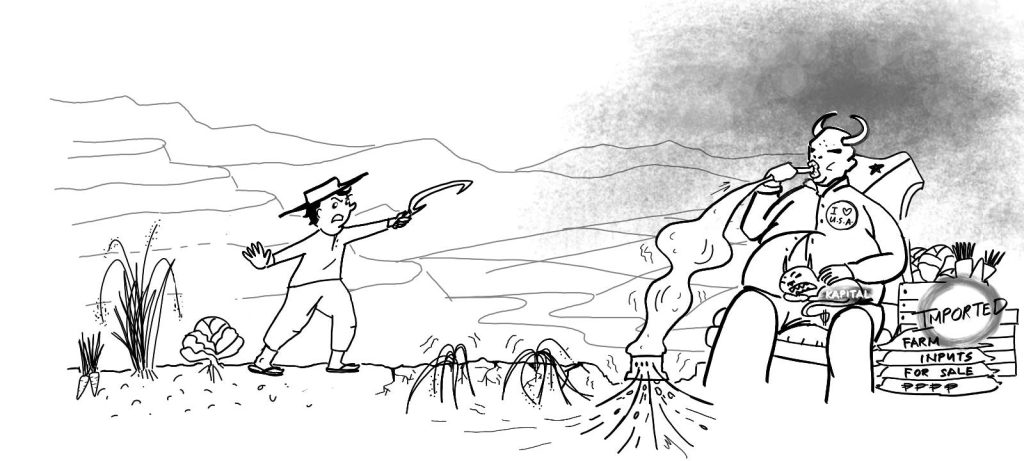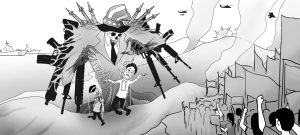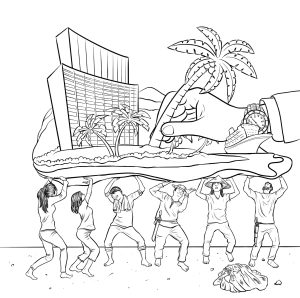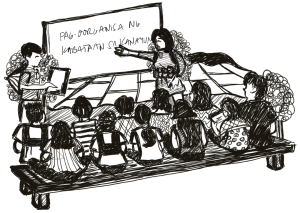Correspondence Golden vegetables


Recent weeks saw Filipinos heaping jokes about “golden onions” because of its high prices and that of other commodities. But onion farmers in Nueva Ecija are not amused, saying they have not benefitted from the high prices of onions, and that they are, in fact, deep in debt. The situation of potato farmers in Benguet are no different.
In September, the price of potatoes in the Philippines was at ₱109.84 per kilogram. Although, these are not the most expensive in the world, unlike those of onions, it is far higher than the farmer’s ₱30 per kilogram selling price. The same with cabbage which sells for ₱300 per kilo, but are sold by farmers at ₱50 per kilogram.
One of these farmers (or gardeners) is Jeremy, who plants potatoes on his own 2,500-square meter land or quarter hectare, with his six siblings. They bring their produce to the Nueva Vizcaya trading post, four hours away from their area.
The potato planting cycle lasts three months. In Jeremy’s case, he borrows his uncle’s tractor, so he doesn’t have to pay rent for its use. He spends for fuel (₱1,360) and pays the operator wages for a three-day job (₱3,000). At ₱70 per kilogram, he spent ₱28,000 for 400 kilograms of potato seeds. Potatoes need fertilizers and pesticides to grow, thus a large amount goes to buying chicken dung (₱7,200) and urea (₱10,000), and different packages of chemicals for spraying. In total, the cost of fertilizer and pesticides reaches ₱39,700.
This year, Jeremy and his fellow gardeners suffered gravely from the rapid increase in urea prices from ₱1,200 to ₱2,400, fuel prices, as well as other commodities. This adds to their previous burden of unabated importation of vegetables and other agricultural products (often from countries with government subsidies for agricultural production) that further pulls down their farmgate prices.
All in all, Jeremy’s total cost during one cropping cycle reaches ₱167,060. The largest part of this is ₱86,260 cost of largely imported farm input. He spends ₱21,000 for transportation and an additional ₱4,500 for other travel fees (toll fee, parking fee and more). Of his total income, 10% will be deducted for debt payments.
By his calculations, the price of labor (rent and family) is at ₱37,300 for the entire cycle-from land preparation, planting, collecting chicken manure, pesticide spraying every two days, harvesting to delivery.
At the price of ₱30 per kilogram, Jeremy sold 6,000 kilograms of potatoes for ₱180,000. Subtracting all costs, he is left with ₱12,940, equivalent to ₱143.78 per day. This is less than half of the region’s ₱300 minimum wage, and only 13% of the ₱1,100 living daily wages.
Every year, the cost of production of gardeners steadily rises while the price of their yield varies on the weather and the caprices of the buyers.
During times of severe losses, Jeremy and his fellow gardeners survive through a mutual aid system called “ub-ubbo” or cooperation not involving money. They freely give their labor to fellow gardeners in exchange for the labor power extended to each other’s farms.
Although heartwarming, their mutual help cannot hide their suffering and those of the families. While gardeners are forced to survive on small income, fat profits are earned by multinational companies who sell expensive farm inputs, usurers who charge high interests, traders who undercut farmgate prices and by government who promote importation that further pull down the prices of agricultural products.
For the full story of potato gardeners in Ifugao, read “The Adventures of Jeremy Gardener” at www.philippinerevolution.nu.










